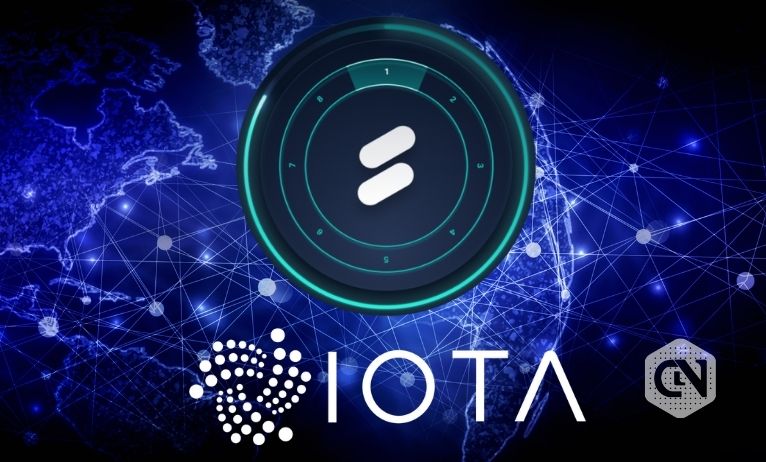IOTA recently released its beta version for smart contracts on the IOTA 2.0 DevNet. With the latest integration, IOTA finally entered Web3, offering early support for the EVM (Ethereum Virtual Machine.)
IOTA is currently working on extending the EVM support to acquire further efficiency. It also supports smart contracts prepared via TinyGo and Solidity. Moreover, the venture intends to port smart contracts onto the IOTA mainnet.
The IOAT will become a trustless, feeless, and seamless interoperability solution for smart contracts by integrating the tokenization framework. That is why every IOTA forecast predicts a positive outlook for the platform.
The integration offers limitless prospects to develop dApps and other Web3 projects on the platform. IOTA aims to address drawbacks related to interoperability, composability, scalability, and fees with the release. In addition, the beta version will prepare an ecosystem for early adopters and builders to leverage the explosive growth of the sector.
It will allow users to deploy smart contract chains without additional fees or friction. They do not even need to conduct auctions or get permission for the process. Chain owners can set the execution price, which will create a sense of healthy competition among chains. It paves the path for users to get the best prices for executing smart contracts across different possible options in the sector.
Smart chain owners can even define their tokenomics and chain with more functionalities on the way. In addition, the upcoming upgrades will allow chain owners to make the transaction fees nil, rewarding validators with native tokens. Thus, it will create an in-built economy, eliminating entry barriers for dApps.
Advertisement
IOTA deployed its smart contracts functionality to address the growing demand for innovative solutions. IOTA has designed the sharded smart contract chains to combine the scalable and feeless DAG ledger. The release also tackles issues like creating an onboarding platform and removing the entry barriers.
Even the base layer of IOTA can handle 1,000+ TPS (transactions per second.) That is why the integration will serve as an ideal shared security layer and trust anchor for the IOTA smart contracts. With Tangle’s DAG infrastructure, IOAT can execute smart contracts subsequently while scaling them horizontally.
The platform has achieved additional throughput by adding extra smart contract chains. Furthermore, it facilitates stability while maintaining complete interoperability and composability of smart contracts by using IOTA as a feeless and trustless asset bridge.
Here is why the community is excited about IOTA smart contracts:
- These smart contracts are L1 tokens for feeless, atomic, and trustless asset bridges
- IOTA offers flexible framework development to build customized dApps
- The smart contracts come with sharding compatibility and offer incentives
- They support the Ethereum Virtual Machine completely
- Users can build smart contracts in Rust and Go and Solidity
The alpha version of the IOTA smart contracts showcased IOTA’s capability to run smart contracts. It allows users to spawn multiple chains while they are anchored to the L-1 IOTA Tangle.
Moreover, developers can start preparing smart contracts within a solo testing environment. However, the alpha version did not support the deployment feature. It also prohibited users from running smart contracts on public networks.
Advertisement
The beta release changes all this by adding improved elements. The factors allow users to utilize IOTA to prepare smart contracts seamlessly. In addition, IOTA also offers several new features like:
- Extended support for UTXO ledgers’ smart contract chains
- Off-ledger requests
- Schema tool
IOTA has quickly become an ideal smart contract deployment platform with these functionalities. As the venture plans to add more features, it will undoubtedly climb through the market ranks too.







